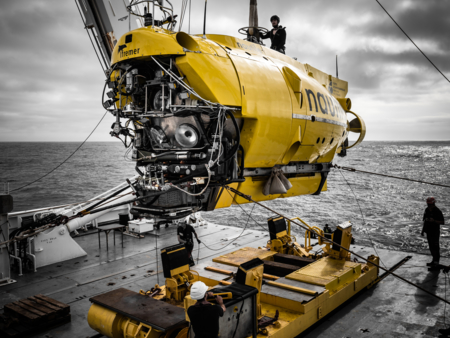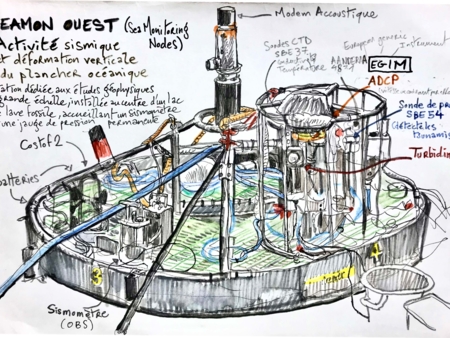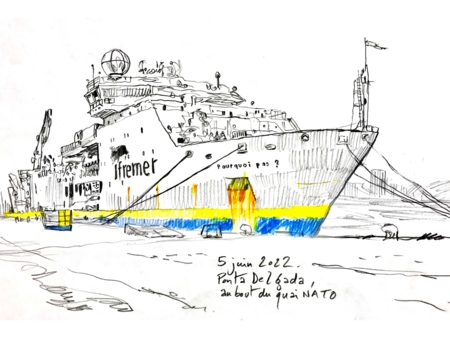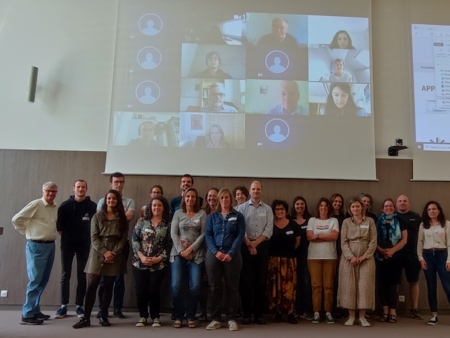Plume hunting along the Mid-Atlantic Ridge
This August, the iNANO cruise took place on-board the RV Pelagia (64PE509, PI: Peter Kraal, CO-PI’s: Martina Preiner, Oliver Plümper) visiting the hydrothermal vent fields of Menez Gwen and Rainbow, both south of the Azores. These two vent fields offer very different settings: whereas Menez Gwen is a basalt-hosted site situated at 850m depth, Rainbow is an ultramafic site at 2300m depth. These differences in geology and depth impact fluid composition and result in diffuse venting and more greyish smokers at Menez Gwen and vigorously belching black smokers at Rainbow. Besides their differences in settings, both areas share many species but are characterised by different dominating faunal assemblages -mussel beds for Menez Gwen vents and coral gardens outside of the vent field- and -shrimp assemblages for Rainbow vents and sea cucumbers and some solitary corals outside the active areas-.
The main purpose of these video transects was to study the active and inactive areas, the shifts in fauna and changes in environmental settings across and beyond the active sites. The transects were planned in such a way that they would complement the previous ones and maybe even allow insights in temporal variations over the years. Moreover, to serve the objectives of the cruise, these transects were used to do “plume-hunting” and to localise actively venting sites and fluid exits to identify areas for subsequent sampling. These plumes (diffuse at Menez Gwen and black at Rainbow) were then sampled to collect the freshest particles possible to reveal the impact of iron nanoparticles on the ocean biochemistry.





